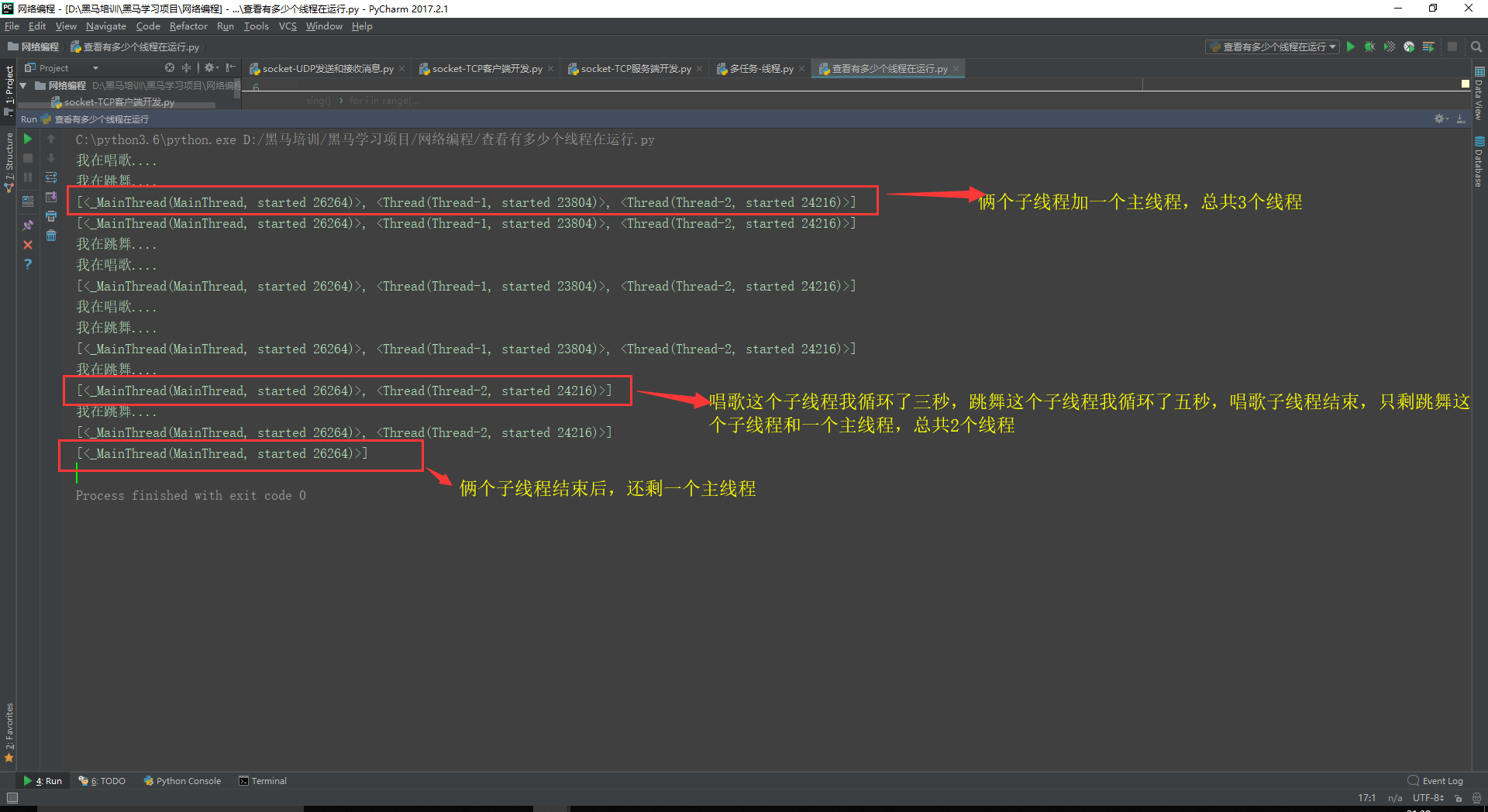以上一节代码为例,如何查看运行的线程数,需要调用threading模块里面的enumerate方法,返回一个线程数列表:
import threading import time """以上一章的代码为例,如何查看有多少个线程在运行""" def sing(): """唱歌5秒钟""" for i in range(3): print('----------------') print('我在唱歌....') time.sleep(1) def dance(): for i in range(5): print('我在跳舞....') print('----------------') time.sleep(1) def main(): t = threading.Thread(target=sing) t2 = threading.Thread(target=dance) t.start() t2.start() # 循环打印正在运行的线程数,调用threading模块中的enumerate方法返回一个列表,里面的元素就是运行的线程,打印出元素个数就是线程数 while True: nums = len(threading.enumerate()) print(threading.enumerate()) # 当没有线程时,就退出 if nums <= 1: break time.sleep(1) if __name__ == '__main__': main()
运行结果如下:
我在唱歌....
我在跳舞....
[<_MainThread(MainThread, started 26264)>, <Thread(Thread-1, started 23804)>, <Thread(Thread-2, started 24216)>]
[<_MainThread(MainThread, started 26264)>, <Thread(Thread-1, started 23804)>, <Thread(Thread-2, started 24216)>]
我在跳舞....
我在唱歌....
[<_MainThread(MainThread, started 26264)>, <Thread(Thread-1, started 23804)>, <Thread(Thread-2, started 24216)>]
我在唱歌....
我在跳舞....
[<_MainThread(MainThread, started 26264)>, <Thread(Thread-1, started 23804)>, <Thread(Thread-2, started 24216)>]
我在跳舞....
[<_MainThread(MainThread, started 26264)>, <Thread(Thread-2, started 24216)>]
我在跳舞....
[<_MainThread(MainThread, started 26264)>, <Thread(Thread-2, started 24216)>]
[<_MainThread(MainThread, started 26264)>]
解释如下图:
